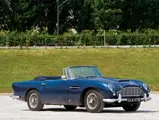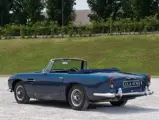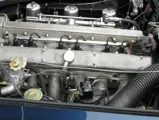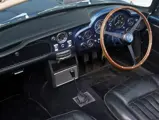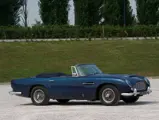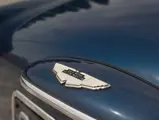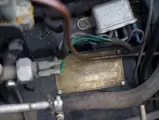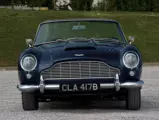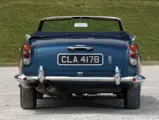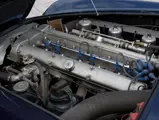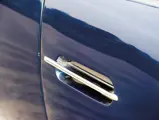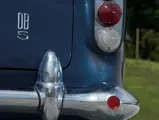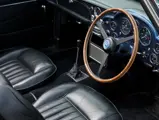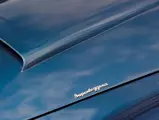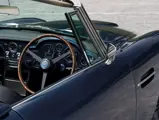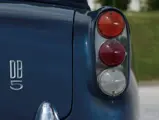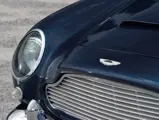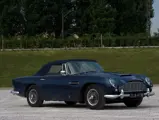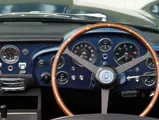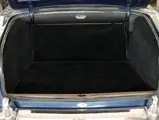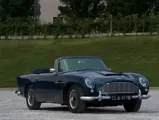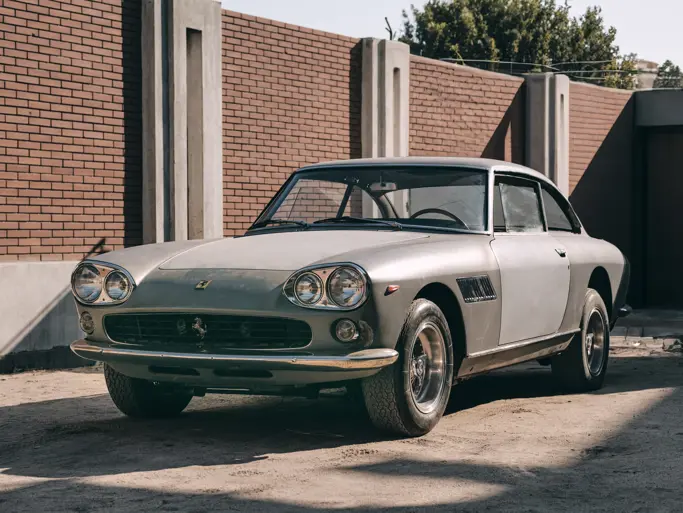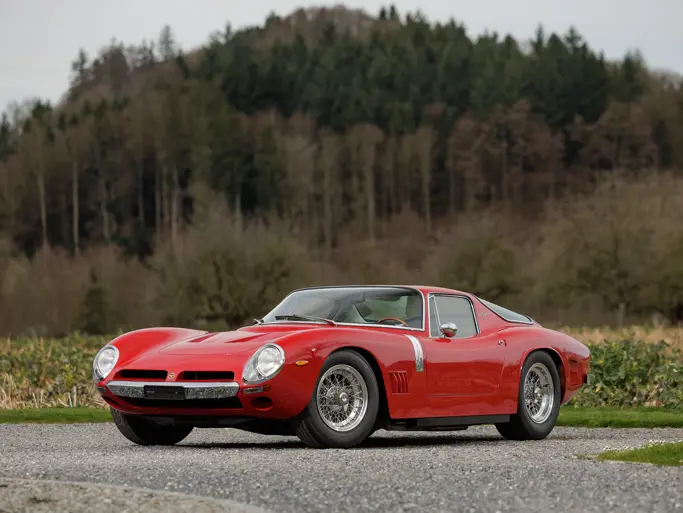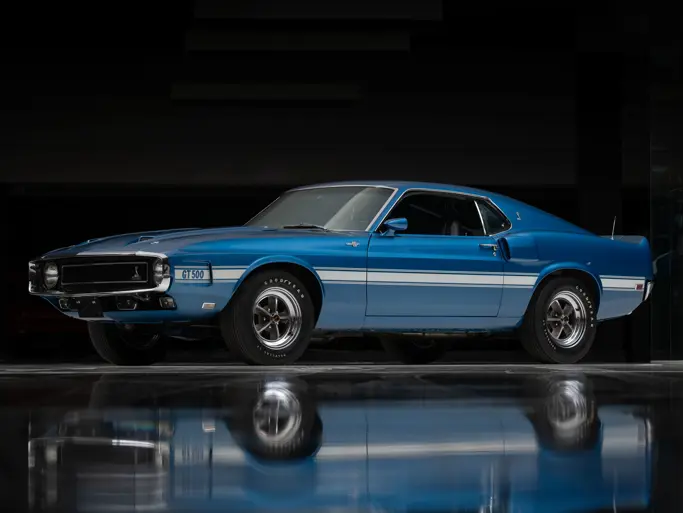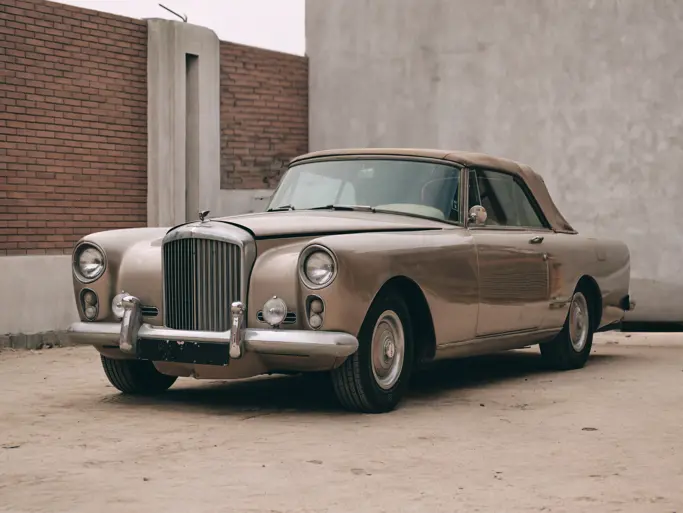London 2012
1964 Aston Martin DB5 Convertible
{{lr.item.text}}
£632,800 GBP | Sold
 | London, United Kingdom
| London, United Kingdom
{{internetCurrentBid}}
{{internetTimeLeft}}

282 hp, 3,995 cc dual overhead cam inline six-cylinder engine, three SU carburettors, ZF five-speed manual transmission, independent front suspension with coil springs, live rear axle suspension with coil springs and Selectaride dampers, and four-wheel disc brakes. Wheelbase: 98 in.
• One of just 123 examples built
• Fitted with a desirable and optional five-speed ZF gearbox
• Single ownership for the last 20 years
• Documented ground-up restoration; minimal use since
• Rare open-top version of Aston’s most acclaimed model
Though superlatives like “legendary” and “timeless” are often liberally applied to various post-war European sports cars, the phrases are definitely more than just clichés in the case of Aston Martin’s classic DB5, which was produced between 1963 and 1965 in a modest quantity of just 1,021 examples. Of course, the handsome model owes much of its renown to its association with the James Bond film franchise, which began with some well-conceived product placement in the third Bond picture, 1965’s Goldfinger.
Goldfinger marked the very first time that secret agent 007 was bequeathed with a snazzy, gadget-equipped sports car, a trademark that continued in all of the ensuing films. The DB5 readily embodied this initial honour and was unwittingly propelled to icon status in the process. The model would go on to appear in several more Bond films, in both original vintage pictures with Sean Connery, like Thunderball, as well as in moments of tongue-in-cheek self-reference, such as in Pierce Brosnan’s Goldeneye or Daniel Craig’s Casino Royale. Continuing this now time-honoured tradition, the DB5 is slated to appear in the upcoming Skyfall, the most recent instalment of the epic Bond franchise.
Despite the fact that so much of the DB5’s renown was generated by this cinematic association, the model itself was certainly deserving of the attention. Externally, the DB5 was clothed in Touring of Milan’s elegant superleggera coachwork, which Aston Martin produced under license at their Newport-Pagnell factory, using the Milanese coachbuilder’s technique of superforming alloy panels around a steel tube frame. Though the bodywork was first seen in the DB4 of 1958, Aston had steadily refined it through five different series of DB4 development, including an overall lengthening of the body in the fifth series, which essentially became the foundation for the DB5.
Mechanically, the DB5 featured a similar evolution, employing the DB4’s inline six-cylinder motor, which acclaimed Polish engineer Tadek Marek had originally designed for the company’s racing program. Increased to 3,995-cubic centimetres in displacement for the DB5, the updated motor was fed by three SU carburettors, an induction configuration initially utilized in the special-series engines of the Vantage-specification DB4 cars. In total, this configuration provided for 282 horsepower and a top speed of 140 mph, very respectable numbers for the day, especially for such an elegant grand touring car.
As the DB5 was a bit of an attempt to combine the numerous and somewhat scattered divisions of the DB4 series into one unified model line, it did not initially feature many variations in terms of available bodies or engine tuning options, with one very notable exception. This was the short run of convertible versions that ran in four discrete series during DB5 production. Properly referred to as convertibles because the famed Volante nomenclature would arrive a little later with the DB6, the open-top DB5 was made in a sparing quantity of just 123 examples, and the model arguably constitutes the height of power and elegance simultaneously achieved during the 12-year production run of the superleggera-bodied models.
Chassis 1523 is the third-to-last convertible built in the second series of open-top DB5 examples, which ran from chassis numbers 1501–1525, making it the 47th example built overall. According to Aston Martin heritage records, this convertible was originally ordered by Mrs S. Joseph, of Grosvenor Street, W.1., with a guarantee issued on 9 November 1964. The car was finished in Astral Blue paint and desirably optioned with black hide upholstery—interestingly, this is the same combination as the DB6 driven by the Duke and Duchess of Cambridge following their wedding. Other features include power windows, the Selectaride adjustable suspension, dual fuel tanks, and most importantly, the true five-speed ZF gearbox, which was a long-legged, high-speed cruising alternative to the standard four-speed David Brown unit.
According to recent British registration records, the DB5 was first registered on 22 December 1964, and it has continuously worn the registration number CLA 417B ever since, an unusual claim indeed. For an initial period, Mrs Joseph regularly serviced her car at Aston Martin’s certified facilities, as demonstrated by heritage records, which feature a maintenance log of entries spanning from April 1965 to May 1966.
By the late-1980s, this elegant open-air Aston had come into the possession of P.J. Scott, Esq., of Binfield, Berkshire. Mr Scott had the wisdom to invest in a comprehensive, ground-up restoration, which he entrusted to Church Green Engineering, Ltd., of Shaftesbury, Dorset. Including a fastidious cosmetic restoration highlighted by a bare-metal repaint in the original colour and a brand new interior, Church Green’s work took almost two years to complete and totalled over £95,000 in receipts, which are included in the car’s substantial file of documentation.
Mechanically, Church Green entrusted the engine rebuild to Goldsmith & Young, Ltd., of Mere, Wiltshire. Managed by the well-known Aston competition tuning specialist John Goldsmith, Goldsmith & Young rebuilt 1523’s original motor, and furthermore, they fitted a stainless steel performance exhaust system for a resoundingly baritone-like exhaust note. According to documented receipts, the engine work alone cost in excess of £9,500, no small investment in 1989.
This stunning DB5 convertible was acquired by its current owner in 1992; in that time, the car has reportedly accrued approximately only 1,200 miles, and the odometer currently displays 86,000 miles, which are believed to be original. Such minimal use and meticulous care have ensured that this DB5 convertible continues to perform admirably while retaining strong cosmetic character.
Chassis 1523 offers a marvellous overall condition, with its well-preserved concours-level restoration emitting a charming hint of patina. Well maintained and serviced as needed by one owner over the last twenty years, this rare DB5 convertible currently exhibits a strong mechanical condition and is a striking open-air example of the marque’s most revered model. In addition to copious restoration receipts and heritage paperwork, 1523 is accompanied by a tonneau cover, a knock-off hammer, an original jack, and an original spare parts catalogue. Perfectly suited for vintage touring events or concours exhibition, this supremely restored and elegant open-top example of Aston’s most beloved model is sure to bring airy cruising thrills and the covetous thrall of enthusiasts and passers-by everywhere.

